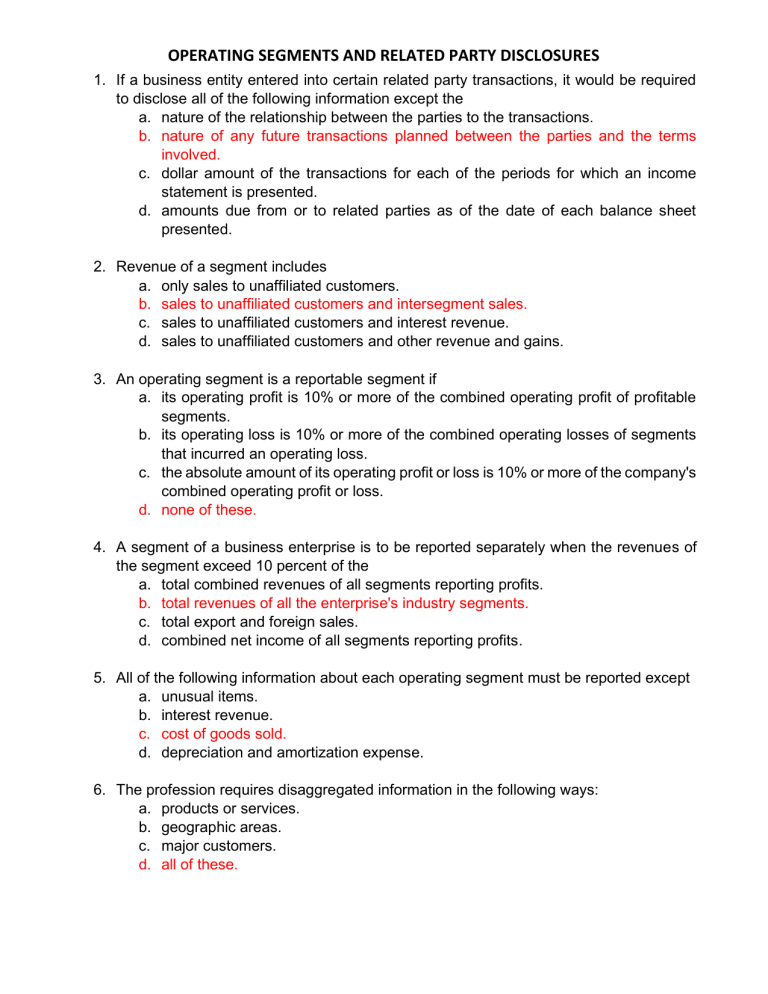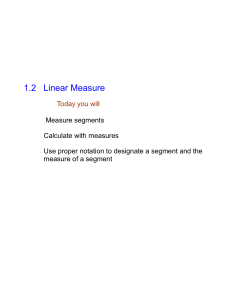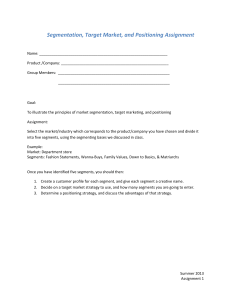Operating Segments and Related Party Disclosures
advertisement

OPERATING SEGMENTS AND RELATED PARTY DISCLOSURES 1. If a business entity entered into certain related party transactions, it would be required to disclose all of the following information except the a. nature of the relationship between the parties to the transactions. b. nature of any future transactions planned between the parties and the terms involved. c. dollar amount of the transactions for each of the periods for which an income statement is presented. d. amounts due from or to related parties as of the date of each balance sheet presented. 2. Revenue of a segment includes a. only sales to unaffiliated customers. b. sales to unaffiliated customers and intersegment sales. c. sales to unaffiliated customers and interest revenue. d. sales to unaffiliated customers and other revenue and gains. 3. An operating segment is a reportable segment if a. its operating profit is 10% or more of the combined operating profit of profitable segments. b. its operating loss is 10% or more of the combined operating losses of segments that incurred an operating loss. c. the absolute amount of its operating profit or loss is 10% or more of the company's combined operating profit or loss. d. none of these. 4. A segment of a business enterprise is to be reported separately when the revenues of the segment exceed 10 percent of the a. total combined revenues of all segments reporting profits. b. total revenues of all the enterprise's industry segments. c. total export and foreign sales. d. combined net income of all segments reporting profits. 5. All of the following information about each operating segment must be reported except a. unusual items. b. interest revenue. c. cost of goods sold. d. depreciation and amortization expense. 6. The profession requires disaggregated information in the following ways: a. products or services. b. geographic areas. c. major customers. d. all of these. OPERATING SEGMENTS AND RELATED PARTY DISCLOSURES 7. In presenting segment information, which of the following items must be reconciled to the entity's consolidated financial statements? Revenues Operating Profit (Loss) Identifiable Assets a. Yes Yes Yes b. No Yes Yes c. Yes No Yes d. Yes Yes No 8. Reese Corp. and its divisions are engaged solely in manufacturing operations. The following data (consistent with prior years' data) pertain to the industries in which operations were conducted for the year ended December 31, 2008. In its segment information for 2008, how many reportable segments does Reese have? a. b. c. d. Three Four Five Six 9. The following information pertains to Maris Corp. and its divisions for the year ended December 31, 2008. Sales to unaffiliated customers $2,500,000 Intersegment sales of products similar to those sold to unaffiliated customers 750,000 Interest earned on loans to other operating segments 50,000 Maris and all of its divisions are engaged solely in manufacturing operations. Maris has a reportable segment if that segment's revenue exceeds a. $330,000. b. $325,000. c. $255,000. d. $250,000. OPERATING SEGMENTS AND RELATED PARTY DISCLOSURES 10. According to Statement of Financial Accounting Standards No. 131, “Disclosures about Segments of an Enterprise and Related Information,” how do firms identify reportable segments? a. By geographic regions. b. By product lines. c. By industry classification. d. By designations used inside the firm. 11. Which of the following tests may be used to determine if an industry segment of an enterprise is a reportable segment under FASB Statement No. 131? a. Its revenue (both from external customers and internal segments) is equal to or greater than 10 percent of total revenue (external and external). b. The absolute value of its operating profit is equal to or greater than 10 percent of the total of the operating profit for all segments that reported profits (or the total of the losses for all segments that reported losses). c. The segment contains 10 percent or more of the combined assets of all operating segments. d. All of the above. 12. Cosmos Corporation sells 5 different types of products. The company is divided for internal reporting purposes into 5 different divisions based on these 5 different product lines. The company should prepare the note disclosure for disaggregated information based upon a. the 5 types of products. b. the 5 different divisions. c. the materiality of each product line based on the revenue or operating profits generated by each product line or the assets utilized by each product line. d. the geographic areas in which the 5 products are sold.



